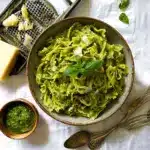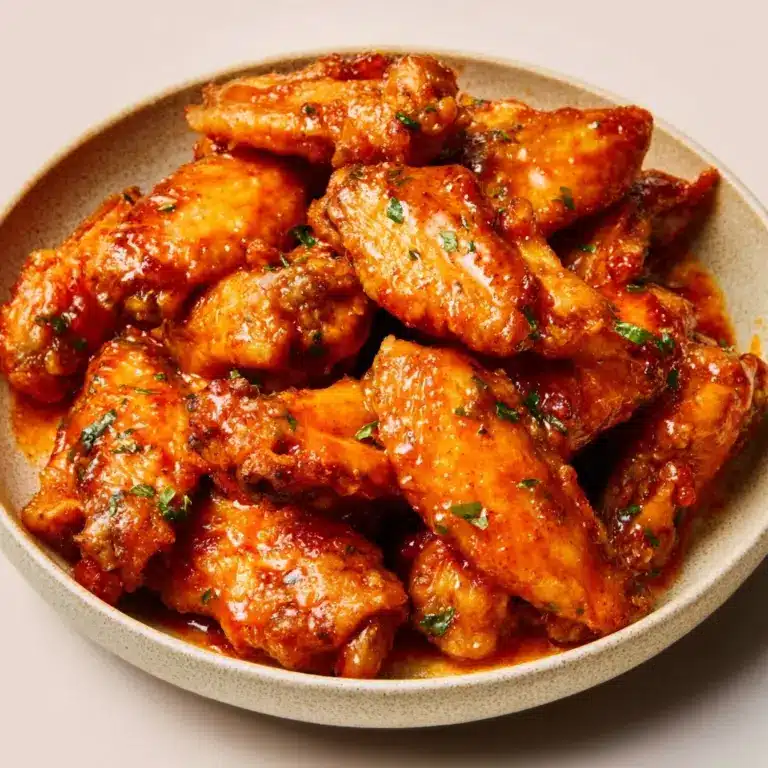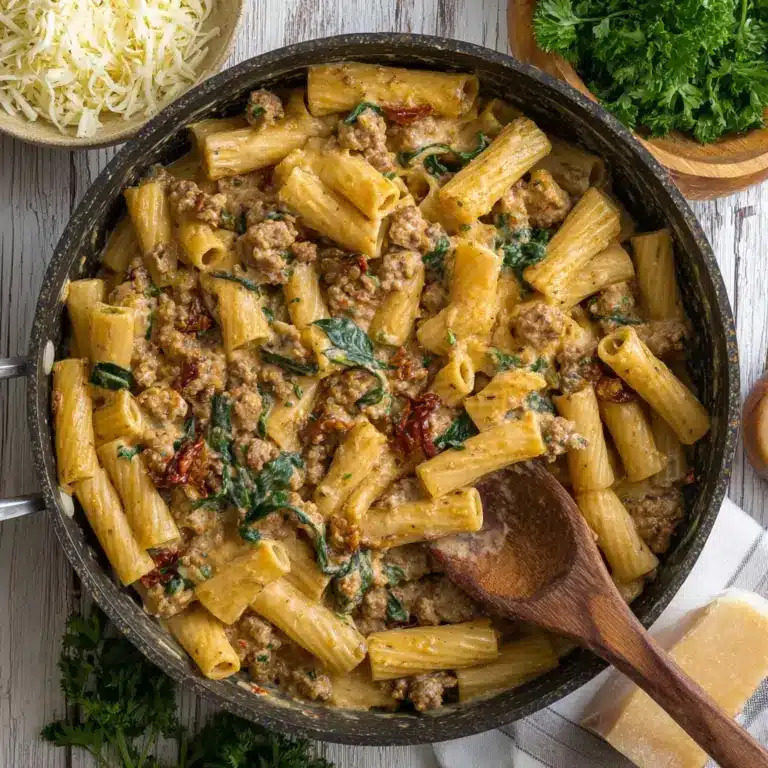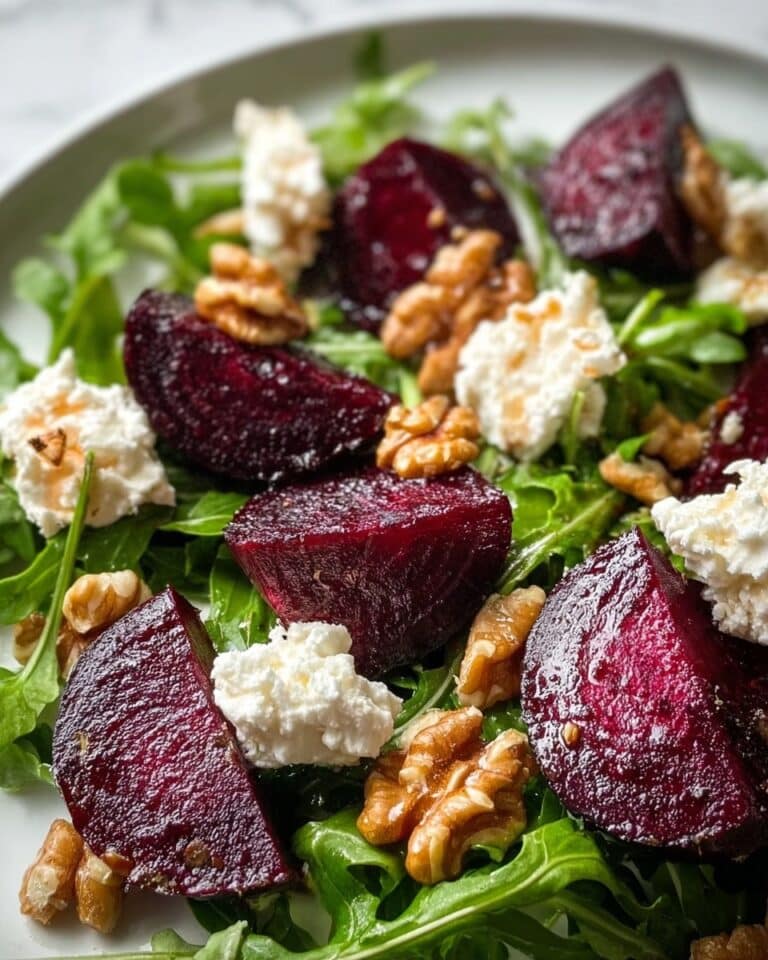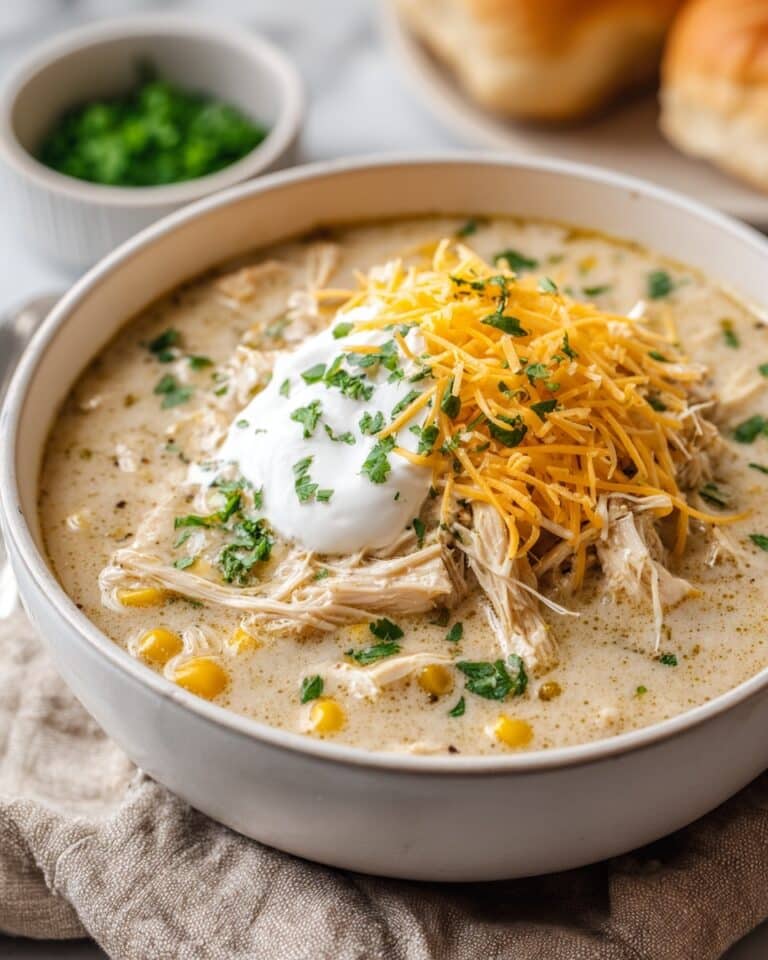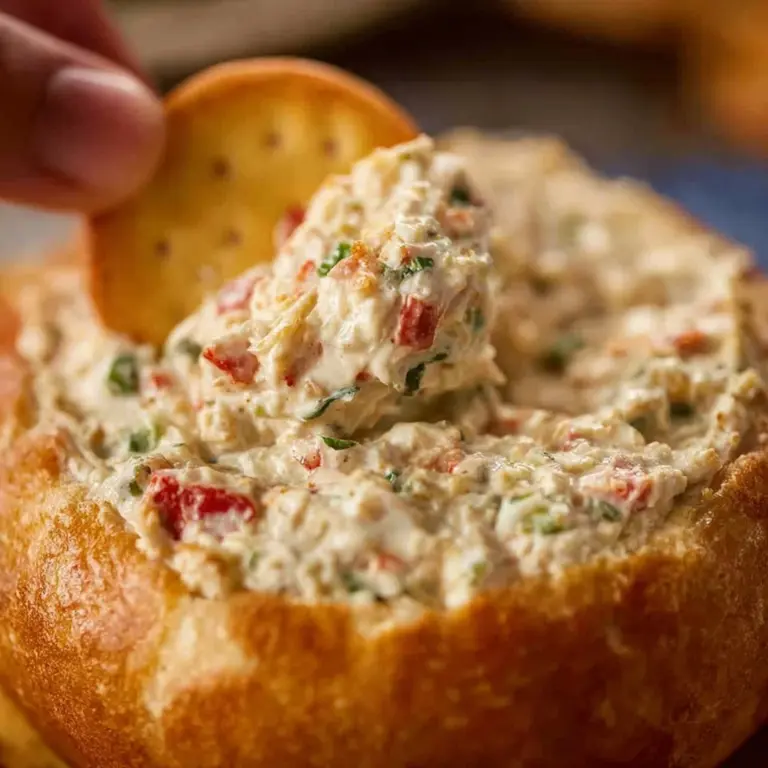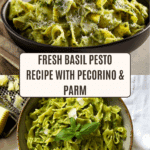The Best Basil Pesto Recipe
If you’ve ever craved something that captures the very essence of summer in a single bite, you’re about to fall head over heels for The Best Basil Pesto Recipe. This vibrant green sauce is intensely aromatic, fantastically fresh, and turns even the most basic meal into something to remember. Imagine a creamy blend of Genovese basil, lush olive oil, toasty pine nuts, the perfect hint of garlic, and two kinds of cheese all coming together in a harmonious burst of flavor. Whether you’re spooning it onto pasta, swirling it through soups, or slathering it over grilled bread, you’ll find The Best Basil Pesto Recipe is pure magic on your table.
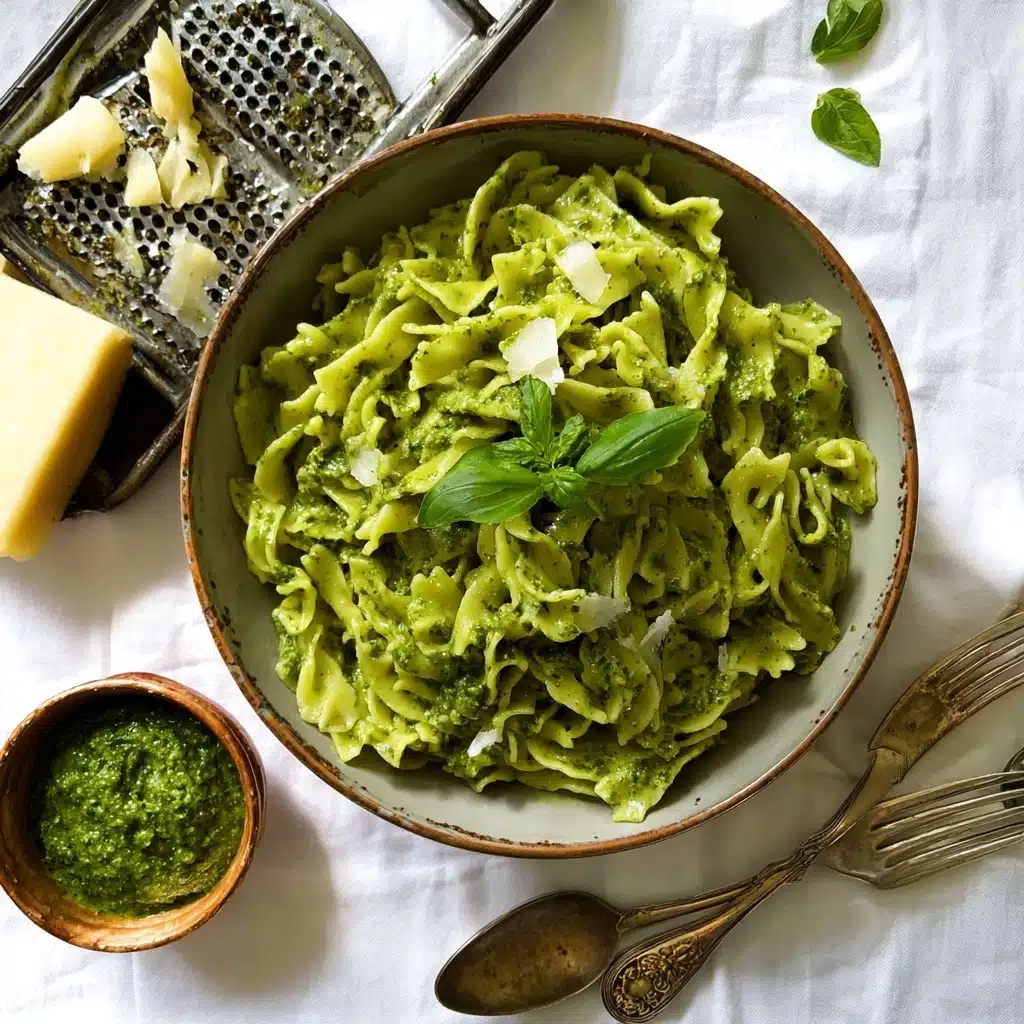
Ingredients You’ll Need
Great pesto is all about big flavors and bright colors, so each ingredient in The Best Basil Pesto Recipe plays a leading role. Freshness is key here, and every element — from the basil’s aroma to the cheese’s salty tang — brings depth and vibrancy to the final sauce.
- Basil: Use 6 cups of loosely-packed Genovese basil, preferably young, bright-green leaves for the sweetest, most aromatic pesto.
- Pine nuts: Toasted Italian pine nuts (1/3 cup) add buttery richness and a little bit of crunch that’s essential to the texture.
- Garlic: Just 1/3 of a small, fresh garlic clove provides subtle heat without overpowering the delicate basil.
- Olive oil: A fruity, mild extra-virgin olive oil (1/2 cup) from Liguria will tie all the flavors together in a silky, luscious emulsion.
- Sea salt: A teaspoon of flaky sea salt (like Maldon or fleur de sel) heightens all the flavors, but be mindful if your cheese is on the saltier side.
- Pecorino cheese: 1/3 cup freshly-grated pecorino-Toscano cheese lends depth and a gentle tang; if you can’t find it, pecorino-Romano is a suitable substitute.
- Parmigiano-Reggiano: Another 1/3 cup, freshly grated, gives a nutty finish and that irresistible, savory complexity.
How to Make The Best Basil Pesto Recipe
Step 1: Chill and Prep
Begin by getting your blender as cold as possible. Pop the bowl into the freezer, or fill it with water and ice to chill while you prep your basil. This quick step keeps your pesto a vivid, lively green. Meanwhile, rinse your basil leaves and soak them in a bowl of clean water for 10 to 15 minutes. This not only washes away any grit but actually helps the leaves blend more smoothly and stay bright.
Step 2: Blend Nuts, Garlic, and Oil
Once the blender is cold, drain it and add the pine nuts, fresh garlic, and olive oil. Blitz until the pine nuts are very finely chopped and the mixture looks creamy and cohesive. Sprinkle in the sea salt, giving your base layer all the right savory notes.
Step 3: Add Basil and Blend
Fishing basil by the handful from its soak (a little water clinging to the leaves is a good thing!), add it to the blender in batches. Pulse gently until the mixture is smooth and a gorgeous, vivid green. If the pesto struggles to blend, add a teaspoon of water at a time until it all comes together in that iconic creamy sauce.
Step 4: Finish with Cheese
Last but absolutely not least, add in the grated pecorino and Parmigiano-Reggiano. Blend once more just until everything is silky and emulsified. Taste and adjust salt if needed. You’re ready to enjoy The Best Basil Pesto Recipe at its freshest and brightest.
How to Serve The Best Basil Pesto Recipe
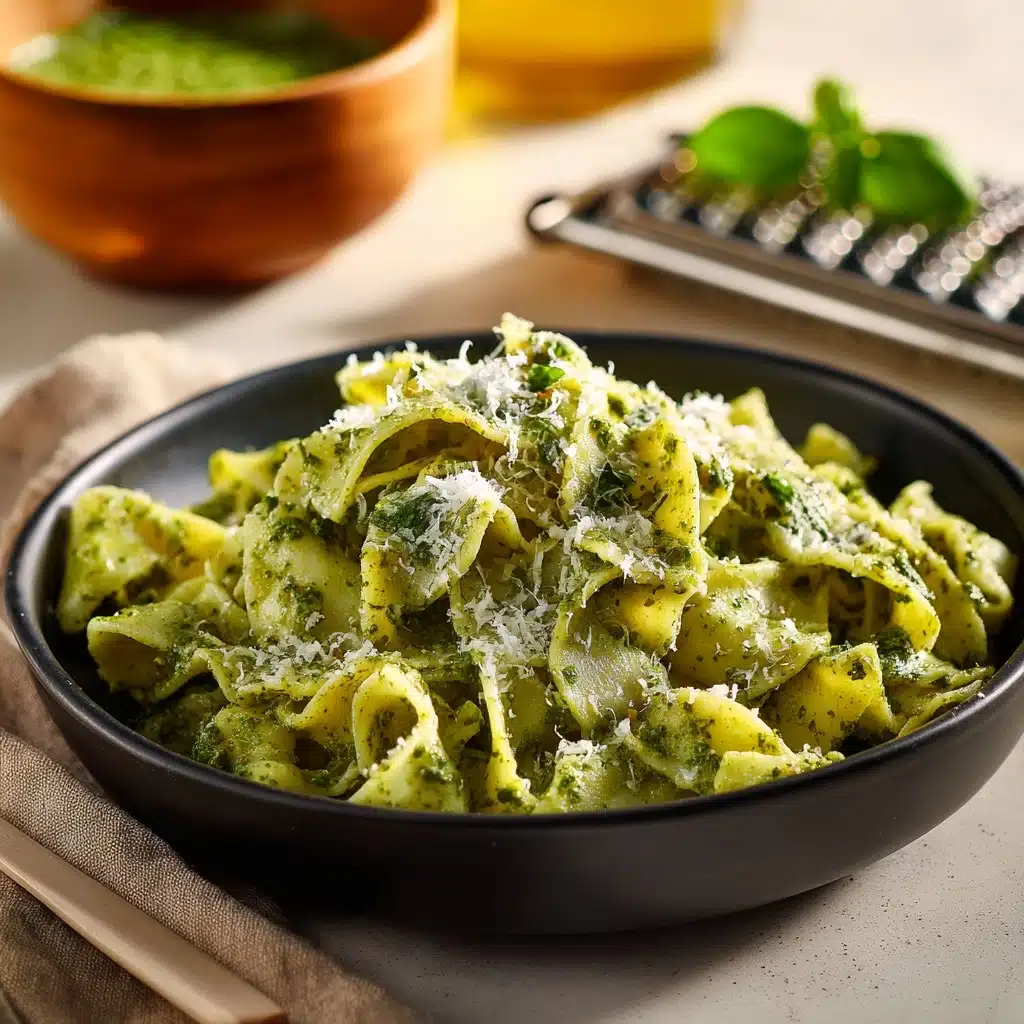
Garnishes
Dress up your pesto with a sprinkling of extra grated Parmigiano-Reggiano, a few whole toasted pine nuts, or even a swirl of fresh olive oil. A little extra basil on top never hurt, and thin lemon zest can make it extra special for guests.
Side Dishes
The Best Basil Pesto Recipe is a natural partner for al dente pasta, but it absolutely sings with crusty bread, tossed through steamed green beans, or spooned over roasted potatoes. For a complete meal, pair with a simple green salad and lemony grilled chicken or flaky white fish.
Creative Ways to Present
Think outside the bowl! Drizzle pesto over pizza in place of or alongside tomato sauce, swirl it into soups and risottos, use it as a dip for crudités, or even layer it into a vegetable or caprese sandwich. The intense color and rich flavor are guaranteed to impress.
Make Ahead and Storage
Storing Leftovers
Leftover pesto should be transferred to a small container and smoothed out so it sits in an even layer. Drizzle a thin coat of olive oil over the top before sealing it; this helps block out air and keeps the sauce bright and fresh. Use within 3 to 4 days for the best flavor.
Freezing
This pesto freezes beautifully. Parcel it into small containers or ice cube trays, then top off with a little olive oil before freezing. That way, you can thaw just what you need, and The Best Basil Pesto Recipe stays vivid green and delicious for up to three months.
Reheating
Avoid heating pesto directly, as high temperatures can dull its color and flavor. If frozen, bring it to room temperature or let it sit overnight in the fridge. Gently stir before serving, and if needed, refresh with a splash of olive oil and a pinch of salt or cheese.
FAQs
Can I use a food processor instead of a blender?
Absolutely! A food processor works just as well for The Best Basil Pesto Recipe. You may need to scrape down the sides a bit more often, but you’ll still get that classic creamy texture.
What if I don’t have pine nuts?
No worries. Walnuts, cashews, or even almonds can step in. The flavor will change subtly, but your pesto will still be vibrant and delicious.
Can I make The Best Basil Pesto Recipe without cheese?
Yes! For a dairy-free option, simply skip the cheese and bump up the amount of nuts, adding a tablespoon of nutritional yeast or a touch of lemon juice to bring some of the savory depth back in.
Why does my pesto turn brown?
This usually happens when pesto is exposed to air or if it’s overheated. Be sure to use the olive oil layer when storing and work quickly with cold ingredients to keep everything bright and green.
What pasta shapes work best with The Best Basil Pesto Recipe?
Short, ridged shapes like trofie or fusilli hold onto the luscious sauce, but it’s also amazing twirled with spaghetti, spread over gnocchi, or dolloped on ravioli.
Final Thoughts
If you’re searching for a recipe that’s simple, spectacular, and utterly timeless, you truly can’t go wrong with The Best Basil Pesto Recipe. The aroma alone is enough to gather everyone around the table. Once you taste it, I know you’ll want to make it again and again — so grab that fresh basil, and get blending!
PrintThe Best Basil Pesto Recipe
Learn how to make the best basil pesto with this easy recipe. Fresh Genovese basil, pine nuts, garlic, olive oil, and a mix of pecorino and Parmigiano cheeses come together to create a vibrant and flavorful pesto sauce.
- Prep Time: 20 minutes
- Cook Time: 0 minutes
- Total Time: 20 minutes
- Yield: About 1 cup 1x
- Category: Sauce
- Method: Blending
- Cuisine: Italian
- Diet: Vegetarian
Ingredients
For the Pesto:
- 6 cups loosely-packed Genovese basil, preferably young, bright-green leaves
- 1/3 cup pine nuts, preferably Italian
- 1/3 of a small, fresh garlic clove
- 1/2 cup fruity, mild extra-virgin olive oil, preferably from Liguria
- 1 teaspoon medium or coarse flaky sea salt, such as Maldon or fleur de sel (use less if using saltier pecorino-Romano cheese)
- 1/3 cup freshly-grated pecorino-Toscano cheese (pecorino-Romano is an ok substitute)
- 1/3 cup freshly-grated Parmigiano-Reggiano cheese
Instructions
- Chill the Blender Bowl: Chill the blender bowl either in the freezer or by adding water and ice cubes until ready to blend. Meanwhile, rinse, then soak, the basil leaves in water for about 10 to 15 minutes.
- Blend the Ingredients: Combine the nuts, garlic, and olive oil in the blender. Blend until the nuts are very finely chopped and the mixture is creamy. Add the salt.
- Add the Basil: In several handfuls, lift the basil from the bowl of water. Shake some of the excess water off, but not all, and add it to the blender. Pulse in the blender until it is a smooth, beautiful green color. If necessary, add more water a teaspoon at a time until it blends and emulsifies fully.
- Incorporate the Cheeses: Add the cheeses and blend again until fully incorporated and serve.
Notes
- To store pesto, place it in a container and cover the top with a thin layer of olive oil. This acts as a seal, preventing oxidization.
- This pesto can be frozen for up to 3 months. Do not heat to defrost; let it thaw at room temperature for about an hour or two, or overnight in the refrigerator.
Nutrition
- Serving Size: 1 tablespoon
- Calories: 80
- Sugar: 0.1g
- Sodium: 90mg
- Fat: 8g
- Saturated Fat: 1.5g
- Unsaturated Fat: 6g
- Trans Fat: 0g
- Carbohydrates: 1g
- Fiber: 0.4g
- Protein: 2g
- Cholesterol: 3mg
Keywords: Basil Pesto, Pesto Recipe, Homemade Pesto

